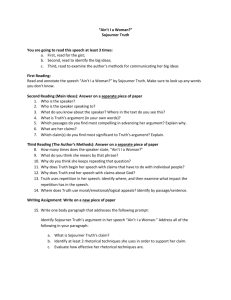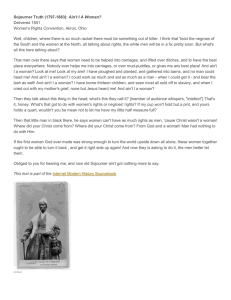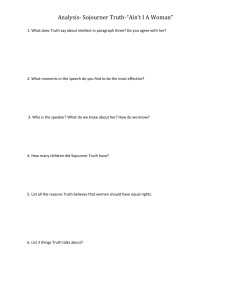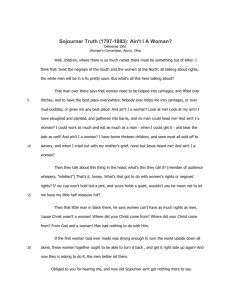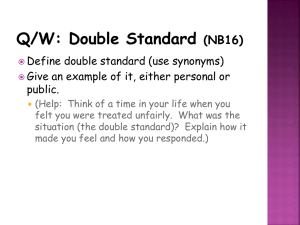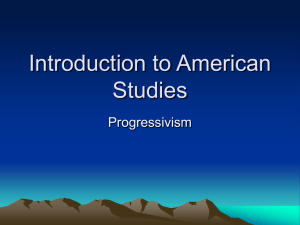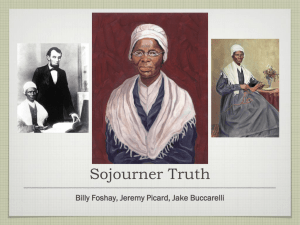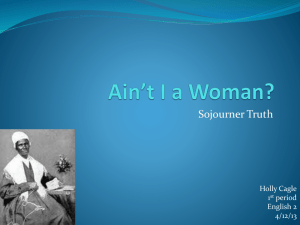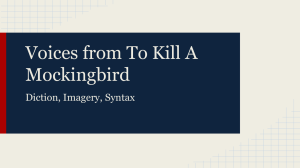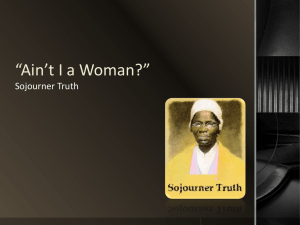Rhetorical Analysis of Ain`t I a Woman
advertisement
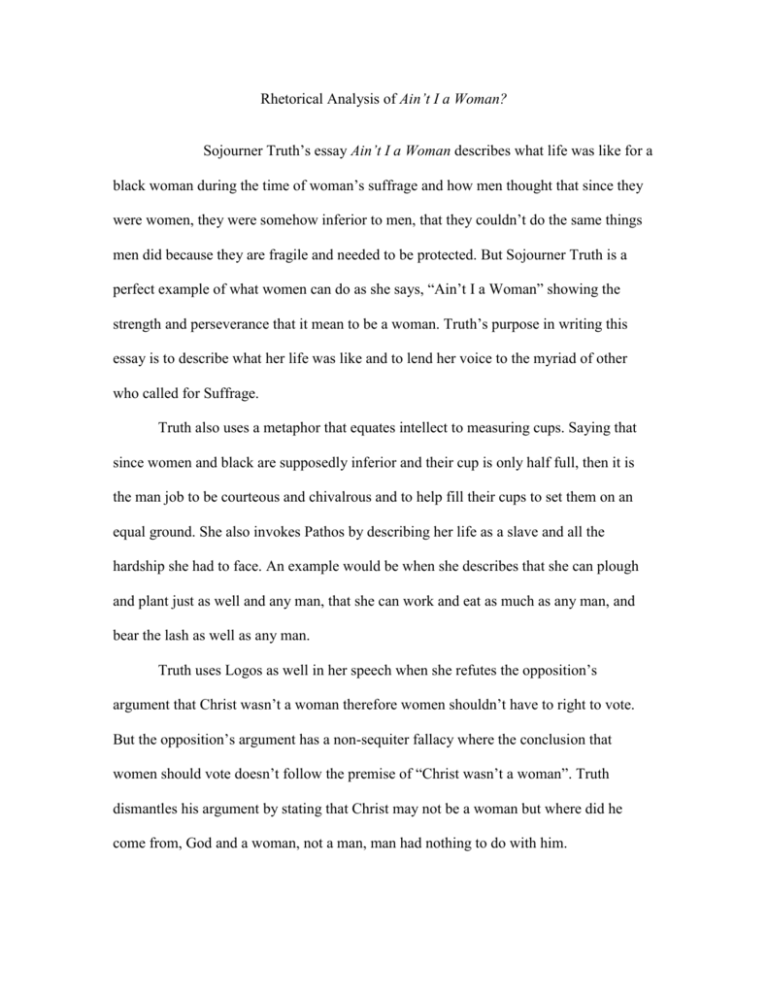
Rhetorical Analysis of Ain’t I a Woman? Sojourner Truth’s essay Ain’t I a Woman describes what life was like for a black woman during the time of woman’s suffrage and how men thought that since they were women, they were somehow inferior to men, that they couldn’t do the same things men did because they are fragile and needed to be protected. But Sojourner Truth is a perfect example of what women can do as she says, “Ain’t I a Woman” showing the strength and perseverance that it mean to be a woman. Truth’s purpose in writing this essay is to describe what her life was like and to lend her voice to the myriad of other who called for Suffrage. Truth also uses a metaphor that equates intellect to measuring cups. Saying that since women and black are supposedly inferior and their cup is only half full, then it is the man job to be courteous and chivalrous and to help fill their cups to set them on an equal ground. She also invokes Pathos by describing her life as a slave and all the hardship she had to face. An example would be when she describes that she can plough and plant just as well and any man, that she can work and eat as much as any man, and bear the lash as well as any man. Truth uses Logos as well in her speech when she refutes the opposition’s argument that Christ wasn’t a woman therefore women shouldn’t have to right to vote. But the opposition’s argument has a non-sequiter fallacy where the conclusion that women should vote doesn’t follow the premise of “Christ wasn’t a woman”. Truth dismantles his argument by stating that Christ may not be a woman but where did he come from, God and a woman, not a man, man had nothing to do with him. Truth finds it necessary to write her speech because she feels that she has an obligation to help out her fellow women and be the voice to the Women’s Suffrage movement. She also wishes to show that women aren’t fragile thing that men can claim as property, but rather strong and independent humans who can do anything they want to.
